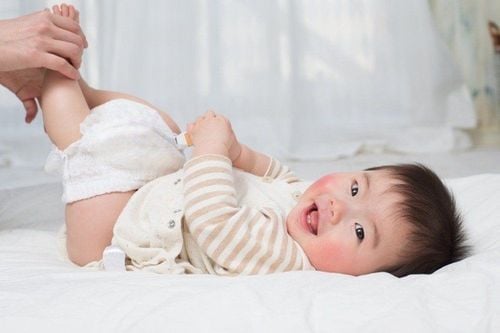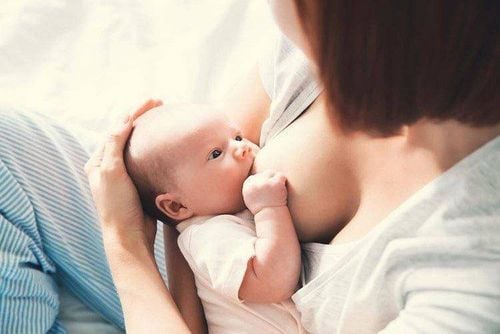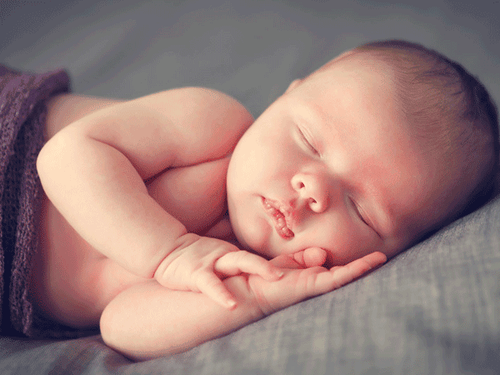This is an automatically translated article.
Newborns usually spend more time in the crib than anywhere else, until transitioning to a real bed around 2-3 years of age. A healthy bed for your baby must be both comfortable and absolutely safe.
1. Criteria for choosing to buy a good crib for your baby
Save space If you live in a small home, you may be interested in portable cribs or mini cribs, both of which take up less space and space than full-sized cribs. Some models can be folded or collapsed for storage when not in use, while others have wheels to roll around the house.
Stability Shake the crib well when you choose to buy it at the store or after installing it at home. If it wobbles or creaks, you may have installed it incorrectly. Shaking or rattling are also signs that you should look for a stronger crib.
Mattress The two most popular types are spring mattresses and foam (foam foam), with a thickness of 7.6 - 15 cm. For foam mattresses, weight is also a factor to consider in addition to thickness. For the same size, a heavier mattress will have a higher density, higher quality foam. Be sure to choose a mattress that is both snug (make sure you can't fit two fingers between the mattress and the crib) and sturdy (as soft ones pose a suffocation risk).
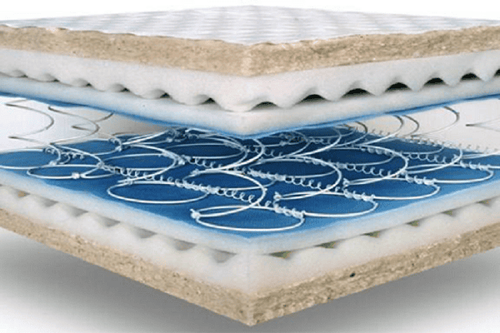
Hai loại phổ biến nhất là nệm lò xo và foam (mút xốp)
Frame size A good baby bed frame should fit a standard mattress, at least 130 cm long x 70 cm wide. Make sure there are no gaps between the sides of the mattress and the sides of the crib to avoid the risk of an infant getting trapped. The distance between the two sides of the crib should not be more than 6 cm (equivalent to the width of a soda can).
Versatility Many cribs are designed to convert into a toddler bed or even the head and feet of a full-sized bed. Make sure that the feature conversion is relatively easy to do and that you also like the design of the bed after the conversion.
Mattress height adjustable Most cribs can be adjusted in height by raising or lowering the mattress support. Start lowering the mattress as your baby learns to sit up and stand up, to avoid the risk of baby climbing and falling out of the crib.

Hầu hết các loại giường cũi có thể thay đổi độ cao bằng cách nâng hoặc hạ giá đỡ nệm
2. Safety rules
Carefully check Start by choosing a sturdy crib that meets modern safety standards. If you decide to borrow or buy a used bed, be sure to check it out carefully in accordance with our guide to buying a good bed for your baby.
Do not wrap the mattress around the sides of the crib These crash pads can lead to suffocation, suffocation or entanglement, and there is no evidence to prevent injury.
Breathable material Using a felt, waterproof mattress is safer, cooler and more comfortable than a regular plastic or rubber mattress. Cover the mattress with a fitted cotton sheet. Flannel fabric will keep your baby warm and comfortable during the cold winter months. Make sure the sheets fit snugly around the mattress and won't come off while your baby is sleeping.
Do not use blankets, pillows, stuffed animals, etc. Warm, soft, and cute, colorful blankets are in fact a hazard, cause suffocation, and are closely related to the syndrome. SIDS infant sudden death. To keep your baby warm, it's best to use foot covers, sleeping bags and special sleepwear for babies instead of blankets of all kinds. If no equipment is available, choose a thin blanket, tuck it securely around the mattress, and only pull it up to the baby's chest. Make sure the blanket is under your baby's arms, not under his chin.
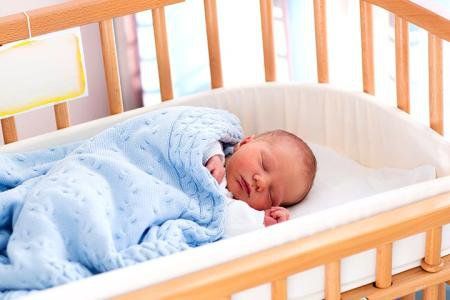
Sử dụng một chiếc chăn mỏng kéo đến ngực để giữ ấm cho trẻ
Do not use infant pillows with soft removable covers or foam particles to avoid the risk of suffocation. Also, make sure baby bedding and nightwear are cord-free to avoid the risk of neck entanglement.
Safe sleeping position Finally, always put your baby on his or her back in a healthy bed. Studies show that babies who sleep on their backs have a lower risk of SIDS. Make sure to follow all of the above safety precautions when your baby is not sleeping at home, for example at daycare or visiting grandparents.
Besides, parents also need to supplement their children with essential micro-minerals such as zinc, lysine, chromium, selenium, vitamin B1, ... to fully meet the nutritional needs of children. The addition of these essential vitamins also supports digestion, enhances nutrient absorption, improves anorexia, and helps children eat well. Parents can simultaneously apply dietary supplements and functional foods derived from nature for easy absorption. The most important thing is that improving your baby's symptoms often takes a long time. The combination of many types of functional foods at the same time or continuously changing many types in a short time can cause the baby's digestive system not to adapt and completely not good. Therefore, parents must be really patient with their children and regularly visit the website vimec.com to update useful baby care information.
Reference source: babycenter.com





